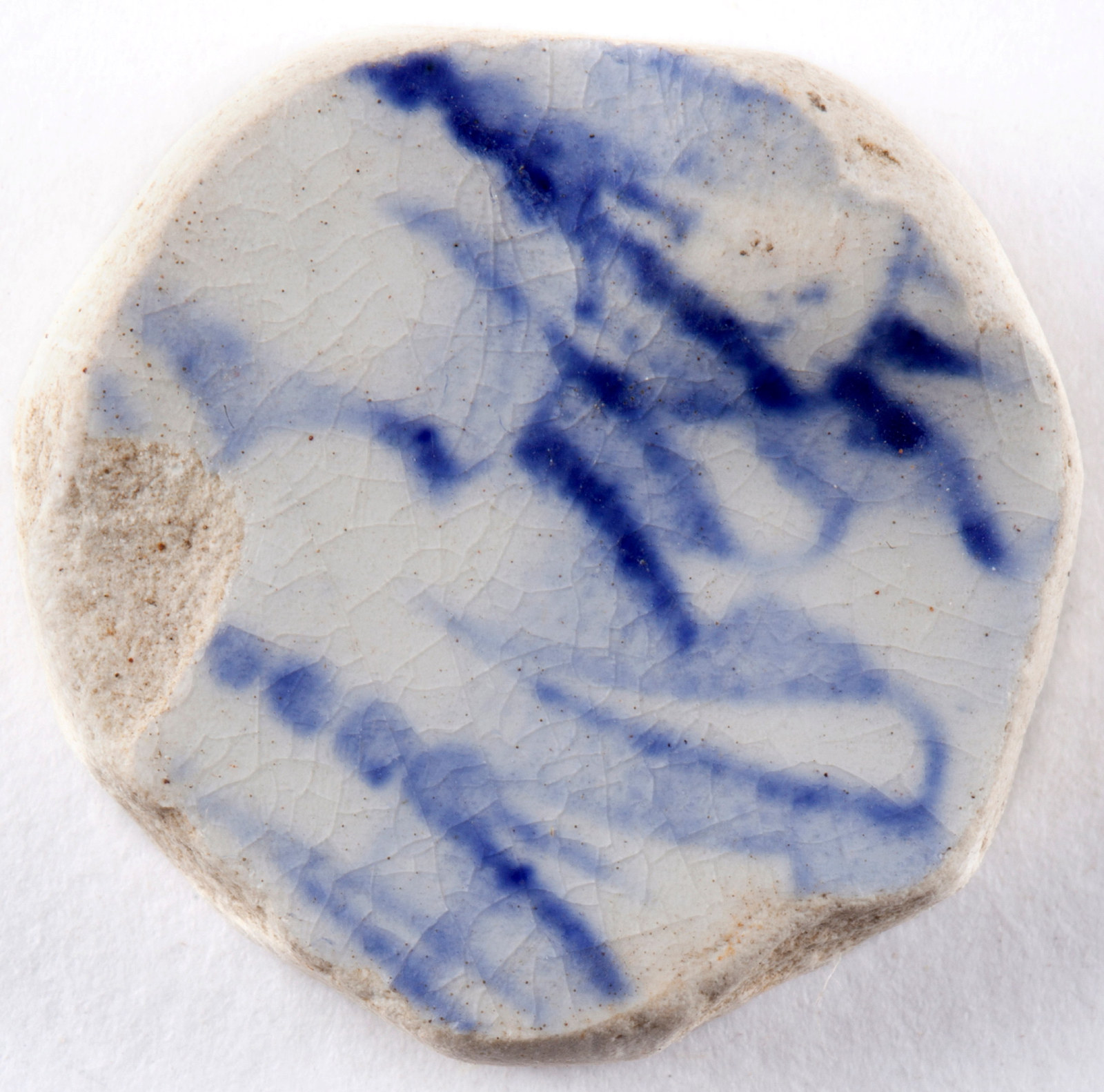What did convicts do in their free time?
After a day of hard work, the convicts were walked back to the Barracks for the evening muster.
Once their names had been ticked off, the men had about an hour of ‘free’ time before they had to go to bed. They may have stood in the yard chatting and smoking clay Object:tobacco pipes or huddled around fires in the recreation sheds if it was cold.
To entertain themselves the men played games, told stories, recited poetry, compared tattoos or juggled. Some men mended their clothes, while others (like Thomas Bagnall, who arrived in 1838) read their Bible and recited prayers.
At times, groups of men may have sung songs or ballads that reminded them of home. Accompanied by clapping and the rhythmic twang of a ‘Jew’s harp’ being played, the music would have sounded out over the Barracks wall.
Skilled convicts spent time weaving cabbage-tree hats, using leaves they collected from the cabbage tree palm. Although it was not allowed, they sold these hats for a few coins, perhaps to gamble with later on.
Gambling
Gambling was forbidden at the Barracks, and convicts caught gambling could end up in a solitary confinement cell.
However, despite the threat of punishment, the men tried their luck with games like ’chuck penny’ or ‘pitch and toss’. Sometimes they played for large amounts of money or items of value.
If they heard a constable or the Deputy Superintendent coming around to check the wards, the men would quickly jump back into their hammocks.
What games did the convicts play?
Convicts played cards or games like chess or draughts that required different sorts of tokens, many of which were handmade. These might have been carved from animal bones (perhaps saved from dinner) or pieces of ceramic and wood they found, or cast in lead.
Here are just some of the games convicts might have played:
- chess
- draughts
- cards
- nine men’s morris
- tic-tac-toe
- shell game
- pitch-and-toss
Alcohol
Like gambling, alcohol was not allowed in the Barracks, but convicts managed to smuggle in spirits, beer and ginger beer to enjoy during their free time.
Archaeologists found this stoneware bottle hidden under the floor at the Barracks.
The name ‘Foster’ on the bottle is evidence that tells us it was made for William Foster, a free person, who owned a pub on George Street during the 1830s.
We don’t know what drink the bottle contained, but it’s quite likely that it was ginger beer – one of the convicts’ favourite drinks.
So perhaps a convict visited William Foster’s pub and smuggled a bottle of ginger beer back into the Barracks to enjoy later.
Lights out
At 8.30pm the yard bell sounded and the convicts trudged up the Barracks staircases to their wards, where each man had his own numbered hammock.
At night the hammock rooms were lit by oil lamps until 8.45pm, when they were put out as part of ‘lights out’. However, it was common for candles to stay lit for the whole night, allowing a small amount of light to brighten the rooms.
In the semi-dark, the men would have rested in their hammocks chatting, telling stories or quietly smoking their pipes. The night’s entertainment was over and it was time to get some sleep before going back to work.
